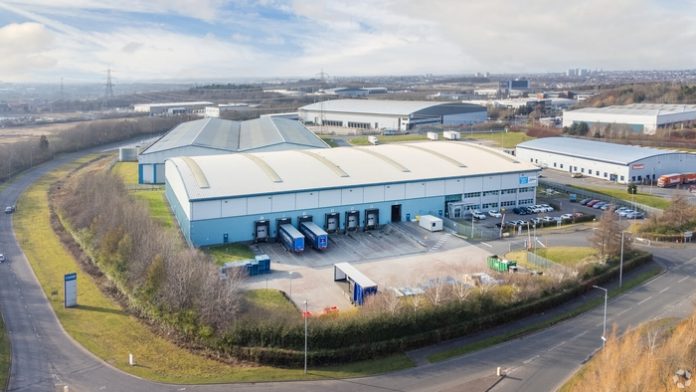Industrial take-up in Scotland hit 1.3 million sq ft in the second quarter of 2023, helped by a surge in activity at the larger end of the market.
Last quarter’s figure, an 18-month high, was boosted by five deals larger than 50,000 sq ft, up from only one in the previous quarter and three in the second quarter of 2022.
The rise in take-up seen in Scotland contrasts with the picture across the UK overall.
UK-wide take-up has been slowing in recent quarters as the consumer squeeze has hit demand for larger warehouses from retailers and logistics firms.
In Scotland all but one of the lettings in the larger size bracket last quarter were in the west of the country. Key deals included Micheldever Tyre Services’ acquisition of 70,000 sq ft of new build space at Connect-70 in Bellshill on a 15-year lease. Shipping firm Cory Brothers’ letting of a 95,000 sq ft facility previously occupied by Filshill at Hillington Park was also noteworthy.
The standout deal in the east was Kloeckner Metals’ acquisition of 100,000 sq ft at Newbridge One, which was recently refurbished by JCAM Investments.
Scotland’s industrial occupier market was active further down the size spectrum last quarter as well. Around 550,000 sq ft was leased in units sized from 5,000 to 25,000 sq ft, which 15% above the five-year quarterly average.
While the bulk of deals in that size bracket occurred in and around Glasgow, Aberdeen and Fife also saw considerable activity.
The latter posted one of its strongest quarters on record, with four lettings larger than 20,000 sq ft accounting for nearly two thirds of its 150,000 sq ft of take-up.
Despite positive momentum in the leasing market, Scotland’s industrial vacancy rate has been rising as tenants have vacated more warehouse space than they have occupied in recent months.
Grant Lonsdale, director of market analytics at CoStar commented: “We expect to see vacancies rise further in the near term, though a lack of construction activity should temper any increases. In our baseline scenario, the vacancy rate moves up to around 4.5% next year, which is just above its pre-pandemic level, meaning the market would still be very tight”.



















